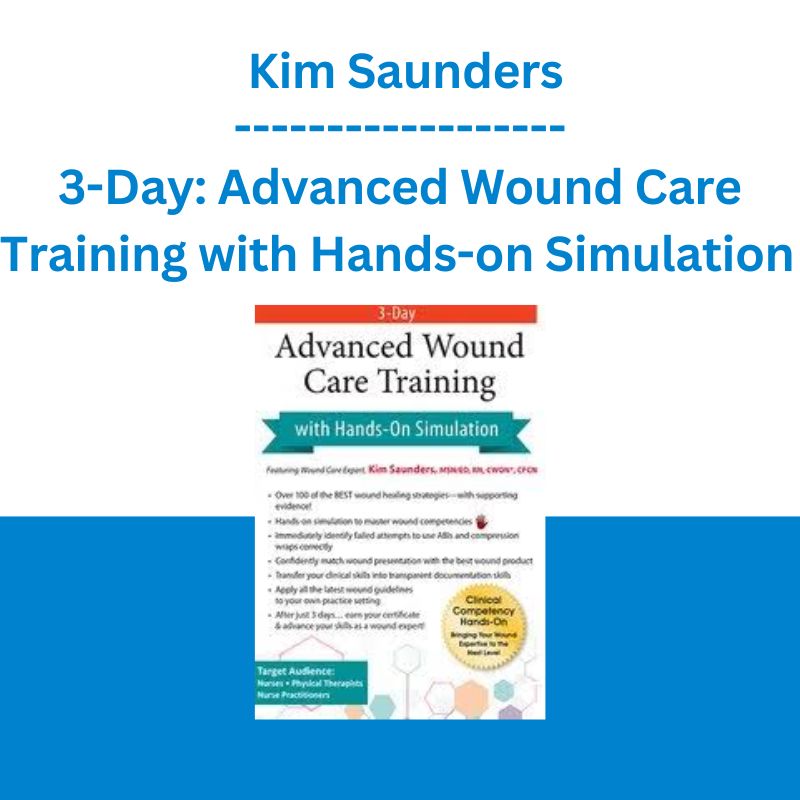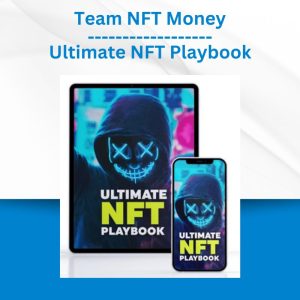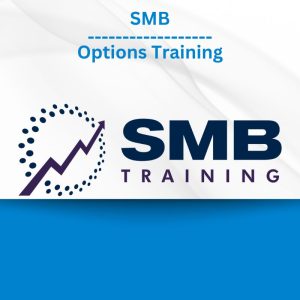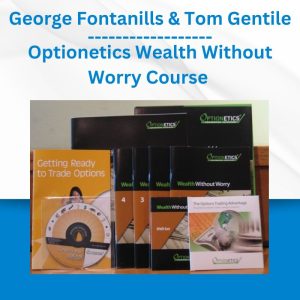*** Proof of Product ***

Exploring the Essential Features of “3-Day: Advanced Wound Care Training with Hands-on Simulation – Kim Saunders”
Description
Wound care is a specialty for a reason. Correct etiology assignment, diagnostics, treatment, and referrals are essential pieces of knowledge in the successful management of wounds. Kim Saunders will break down the latest information coming out of practice guidelines and research for you during this intense 3-day training opportunity. Your practice will be elevated as you incorporate the current best practice standards into patient care.
The hands-on sessions simulate clinical competencies to address the evolving challenges of wound care. You will have the time to critically think through patient scenarios to determine what went right… and what went wrong. In this safe learning environment, you can feel comfortable asking questions of a national wound care expert. We guarantee that you will leave with countless new skills to improve your assessment, documentation, and treatment of wounds.
Three days of intense learning about the complexities of wound care will transform the way you provide care, increase your confidence and eliminate your fears.
Speaker
Kim Saunders, MSN/ED, RN, CWON®, CFCN
WOC Consulting, LLC
Kim Saunders, MSN/ED, RN, CWON®, CFCN, has extensive experiences as a wound, ostomy, and continence nurse across a variety of settings, including acute care, hospice, home health and skilled nursing facilities. As a respected expert in her field, Kim evolved her practice to be able to more fully share her insights as co-owner of WOC Consulting, LLC. In this role, she consults with healthcare systems on a variety of challenges that develop related to wound, ostomy, and incontinence-associated dermatitis. Some of the special projects her knowledge has been sought for include: guiding standardization of wound care formularies and pressure-relieving device selections, as well as a myriad of other processes to standardize and improve upon existing skin and wound care delivery. Her wound care experience goes beyond trouble-shooting the most challenging of patient wounds. It also includes expertise regarding the increasingly important ability to incorporate cost-effective care and reimbursement considerations at the bedside.
Kim is an active member of the Wound, Ostomy and Continence Nurses Society™ and the Advanced Wound Care Society. She has traveled the country extensively to deliver practice-changing wound care trainings to experienced healthcare professionals. Kim is also the author of the Wound Care Pocket Guide: Clinical Reference, Second Edition (PESI, 2017).
Speaker Disclosures:
Financial: Kim Saunders is the owner of WOC Consulting. She receives a speaking honorarium from PESI, Inc. She has no relevant financial relationships with ineligible organizations.
Non-financial: Kim Saunders is a member of the Wound, Ostomy, Continence Nurse Society.
Objectives
- Determine arterial insufficiency via bedside ABI.
- Match wound presentation with the best wound product.
- Develop wound dressing change orders based on 4 questions.
- Determine the etiology of a wound via clinical assessment.
- Anticipate expected work-up per wound etiology.
- Demonstrate accurate measurement & documentation of wounds, tunneling, and undermining.
- Differentiate between product types, based upon: indications, implementation and precautions.
- Determine type of debridement per clinical presentation.
- Demonstrate compression level/product based on ABIs.
- Identify systemic assessment needed in diabetic ulcers.
- Analyze standard of practice protocols in treating diabetic wounds.
- Explain the most challenging problems seen in the diabetic foot.
- Discuss clinical pearls with various wound bed presentations.
- Identify GI & GU pathophysiology with associated surgical diversions.
- Demonstrate differences in flat, convexity, high-output, & closed-end pouches.
- Differentiate between pseudostoma & fistula management.
- Practice pouching options with EC fistulas & tube sites.
- Evaluate risk factors of neuropathic ulcers.
Outline
Wound Tissue Assessment & Treatment
- From your assessment, determine the cause
- Considerations across the disciplines to support the healing goals
- Special consideration for tendon or bone exposure
- Tips for the non-healing tunneling/undermining wound
- What can go wrong with wound care measurements
4-Step Approach to Guide Wound Product Selection
- Wet vs. dry
- Depth vs. flat
- Antimicrobial concerns?
- Need wound barrier from incontinence?
Practice Guideline Recommendations
- Pressure injuries, shearing
- Friction, MASD, MARSI, skin tears
- Venous, arterial, neuropathic
- Surgical wounds
- When is it time for a referral?
- Documentation strategies to avoid a costly mistake
HANDS-ON LAB
Hands-On Simulation
- Determine arterial insufficiency via bedside ABI
- NPWT complicated & special etiology considerations
- Staging pressure injuries, measuring, documenting, & treatment recommendations
- Compression wrapping
- Diabetic foot ulcer off-loading with pixel sole & reusable shoe
- Demonstrate pouching options for leaking tube sites & EC wound fistulas
- Case review: Critical thinking on the most challenging wounds
Target Audience
- Nurses
- Physical Therapists
- Nurse Practitioners
Reviews
Nancy P
“This was fantastic. I will reference it and my notes frequently. Good take-aways!”
Please see the full list of alternative group-buy courses available here: https://lunacourse.com/shop/









